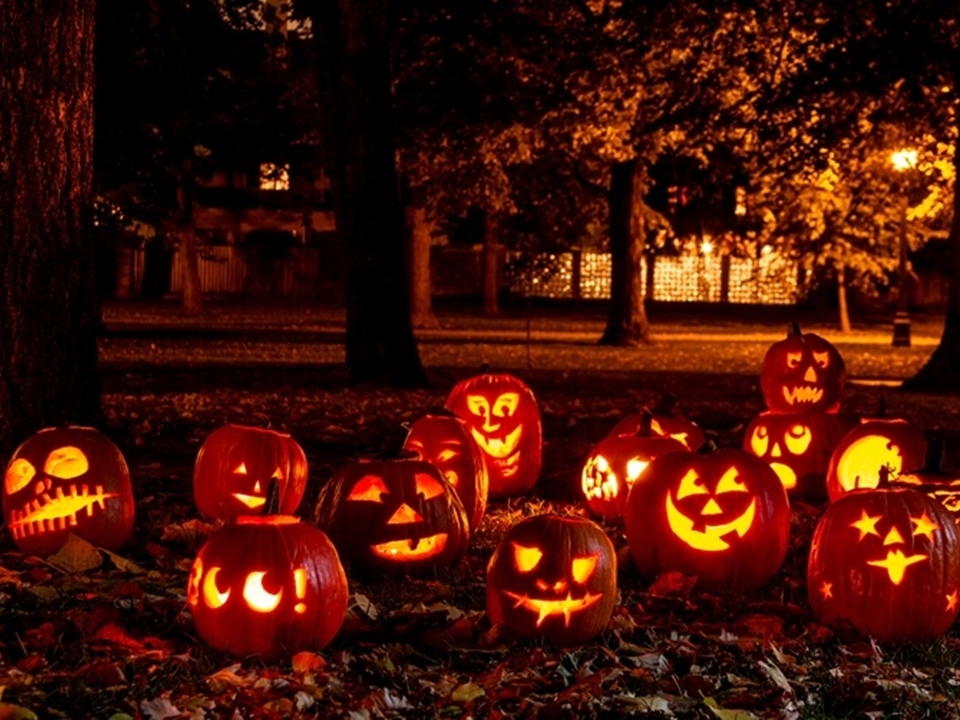26 Oct The Origin And Traditions Of All Hallows’ Eve

Aside from Christmas, Halloween has largely become the most popular celebration of the year. There has been a huge increase in the popularity of Halloween over the last couple of decades, with more people celebrating than ever.
Unlike Christmas, when the festive season takes over for weeks, Halloween in Dublin is a normal day punctuated with fun! Homes decorated, sweet treats galore, and fun costumes all make Halloween a really great festival.
Despite the increase in popularity, the traditions associated with Halloween haven’t changed a great deal. People still love bobbing for apples, building a bonfire and baking a brack.
While many people dismiss Halloween as a commercial celebration designed to benefit the economy like Valentine’s Day, it actually has long standing roots. So, why do we celebrate Halloween, and where did all of the traditions come from?
The beginnings
The Halloween festival has its roots in Samhain, the Celtic celebration that marked the end of the harvest season and the start of the Celtic New Year.
Back in those times, it was believed that the barrier between the spirit world and the real world was weaker during the night of the 31st of October and the 1st of November. This belief meant that the dead were able to return to earthside for the night before Celtic New Year’s Day on the 1st of November.
However, the Celts were actually scared of the dead, so they built fires to keep them away from living people.
When Catholicism began to spread, the Church incorporated the festival as All Saints’ Day – since they didn’t approve of anything related to paganism. All Saints’ Day is the 1st of November, and its aim was to honour Christian martyrs. The day before this celebration was, therefore, All Saints’ Eve.
Where did the name ‘Halloween’ come from?
As the pagan festival and All Saints Day merged, it was coined ‘Hallowmass’, meaning the mass of the saints. Since the 31st of October was the day before, it was named All Hallows Eve, which over time became Halloween.
Why did this Celtic celebration spread so far?
During the Irish famine, over one million people left the country and took their traditions wherever they went. With many emigrating to America, the festival gradually took hold. Nowadays, Halloween is huge in America and adds several billion to the American economy each year.
Where did ‘trick or treat’ originate?
There are many theories behind the origins of ‘trick or treat’. It has been documented that children would dress up and seek alms in exchange for entertainment during medieval times.
During the 1900s, there were many jokes played around Halloween, and they often went too far. People would wear masks to stop them from being recognized when they were doing things they shouldn’t, like vandalizing property. At this time, the phrase ‘trick or treat’ had become a threat – and not a fun holiday phrase. People would use it as a way of saying, ‘I’ll do something bad if you don’t give me something good’.
To avoid trouble, many shopkeepers and neighbours would offer sweets to placate the young vandals.
Why do people carve pumpkins?
Where would we be without a carved pumpkin at Halloween? This vegetable has become synonymous with this time of year. Traditionally, pumpkins were harvested during October, and so they were quickly associated with the festival.
There are two theories behind why pumpkins are carved for Halloween. First of all, the Celts were worried about evil spirits during Halloween and so would carve scary faces onto turnips, adding a light inside.
The second theory is that an Irishman named Stingy Jack tricked the devil into paying for his tab in a pub by turning him into a silver coin. However, the coin was then placed into a pocket alongside a crucifix, which forced the devil to remain that way. Eventually, Stingy Jack freed the devil but made him promise that he wouldn’t take his soul upon his death. This meant he had nowhere to go; the devil wouldn’t take him to hell, and he was not welcome in heaven either. Jack’s soul, therefore, continued to roam Ireland.
Some people believe that the faces carved into turnips were there to keep Jack away from homes. Other people say that Jack was given a piece of burning turf when he didn’t go to hell. The turf was placed inside a turnip, which he carried around as he walked through purgatory.



Sorry, the comment form is closed at this time.